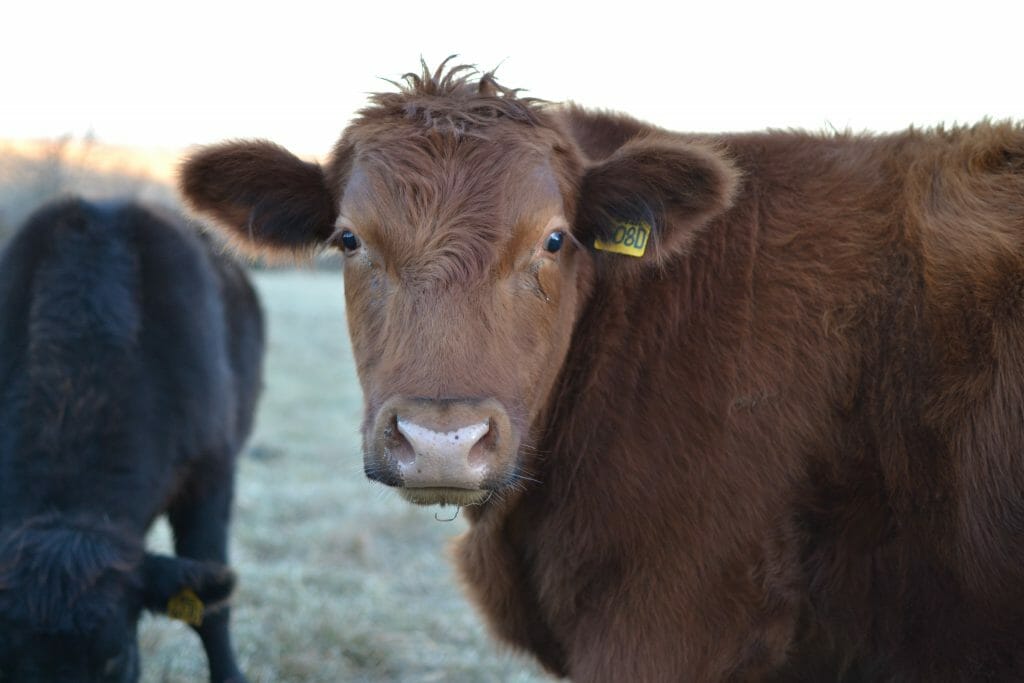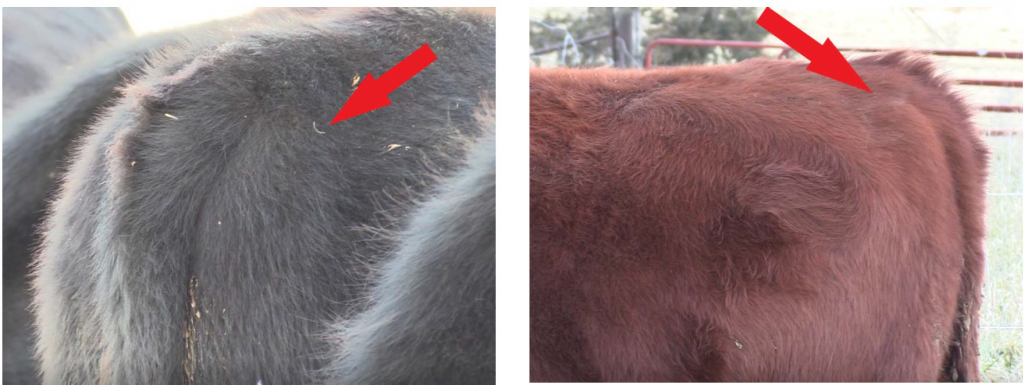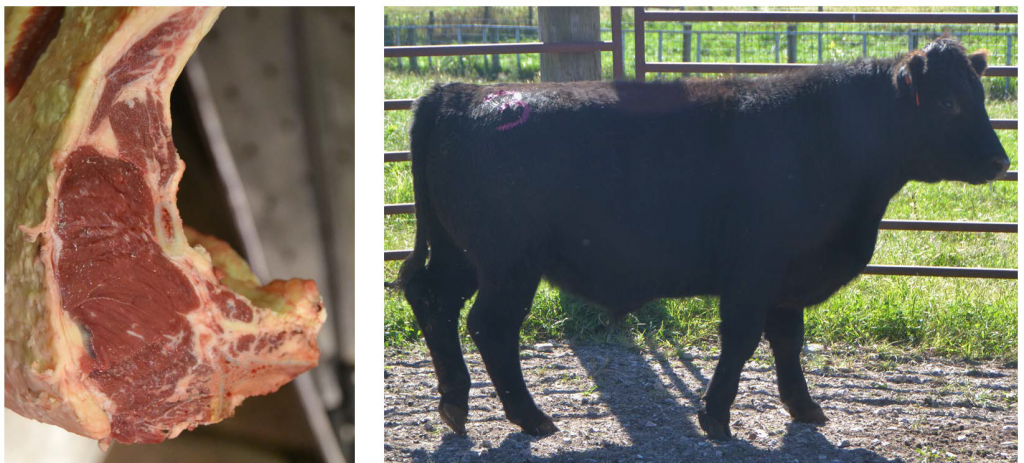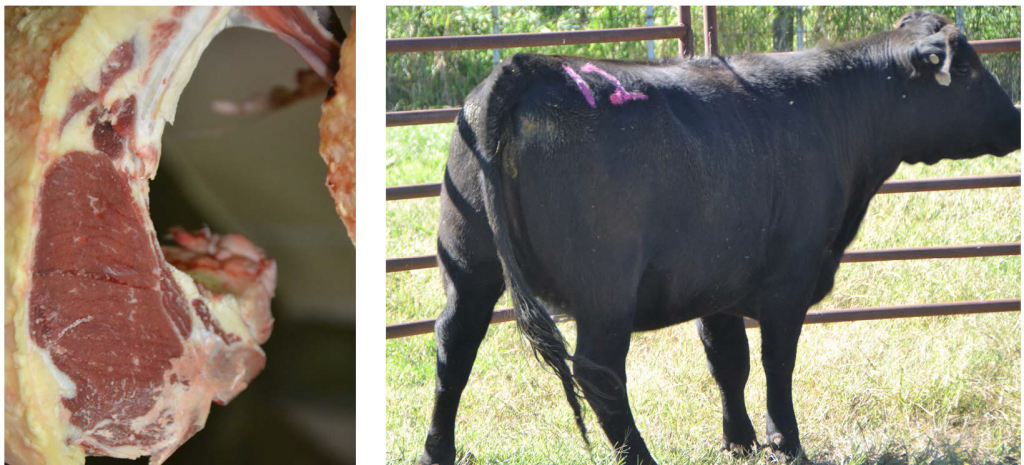Finishing Cattle on Grass: Lessons Learned from PFI
Grass-fed and -finished beef requires a proper finish to ensure an enjoyable eating experience. A major issue in grass-finishing is the ability to produce a consistent, high-quality end product. An improper finish may be due to insufficient fat insulation and can produce off-flavored meat. Consistency and quality is influenced by a variety of factors including feed resources, grazing management and genetics.
Anibal Pordomingo, a world-renowned grass-fed beef researcher, gave a workshop to PFI farmers in November 2018. The factors below should be considered when finishing grass-fed beef, and are adapted from Anibal Pordomingo’s Production of Grass-Fed Beef workshop materials, farmer and researcher knowledge and on-farm research results.
Weight Gain
Live weight gain is the first gauge of performance. Gains above 2 pounds per day indicate animals are not only meeting their growth needs but also laying fat (subcutaneous, intramuscular and around organs). Gaining 2 pounds per day over six months is a good baseline for finishing, but is not the only indicator of finish. An animal must be gaining weight at the time it is harvested. Keep in mind, intramuscular fat (IMF), which creates marbling in meat, is the first fat animals lose. Consider this when harvesting at the end of winter or early spring.
Generally, 100% grass-fed cattle are harvested at 1,000 to 1,200 pounds live weight, yielding a 550 to 600 pounds hot carcass weight (hanging weight). This will vary depending on breed and frame size.
Forage Chains
Finishing-quality forage is defined as the power of a forage to sustain a rate of gain above 1.8 pounds per day. Using both perennial and annual forages helps to create year-round grazing opportunities. Table 1 shows the composition of the ideal forage to accomplish the highest weight gains in a grass-fed beef system.

One of Dave and Meg Schmidt’s grass finished cattle at Troublesome Creek Cattle Company in Exira, IA
To achieve the above weight gains, forage should be managed using adaptive multi-paddock grazing (AMP). Resting paddocks after grazing is of utmost importance, with a general recommended of around 60 days’ rest between grazing.
To achieve the above weight gains, forage should be managed using adaptive multi-paddock grazing (AMP). Resting paddocks after grazing is of utmost importance, with a general recommended of around 60 days’ rest between grazing.
| Table 1. Desired composition of green forages for high individual production* | |
| Nutritional Components | Values |
| Dry matter (%) | >20 |
| Crude protein (%) | 14-18 |
| Soluble carbohydrates (%) | >18 |
| CP/SCH | similar or below 1 |
| NDF (%) | <40 |
| ADF (%) | <25 |
| In vitro digestibility (%) | >65 |
| DM intake (% body weight) | >2.5 |
| ME concentration (Mcal/kg DM) | >2.4 |
| *Anibal Pordomingo, 2018, Production of Grass-Fed Beef | |
Genetics
Cattle with small to moderate frames and a large heart girth (deep-bodied) do best in grazing systems; British breeds generally fit the bill. A large girth signifies the rumen will have ample room to fill with forage. Select cattle that don’t continue to grow bone but instead grow muscle, with high reproductive rates and easy-fleshing traits. Many PFI members have cattle genetics from Pharo Cattle Company which sells genetics that thrive on forage.
Animals selected for grass-finishing should also be sound on their feet and legs as they will have to cover ground each day to consume adequate amounts of forage dry matter for desired gains. The ideal animal for finishing in hot climates has a dark hide covered with light colored hair such as red, grey or khaki. Cattle that must stand in water or under a tree on hot days are not well suited for grass-finishing.
Visual Appraisal
According to Allen Williams, producers should look for adequate fat cover over the ribs and back, around the tailhead, in the cod of steers or udder of heifers and in the brisket.
A well-finished animal will have spongy fat cover over all ribs with no ribs visible to the eye, all the way back through the 13th rib. The hide will look stretched over the intercostal muscles. The topline or back of the animal should be either level in appearance or have a slight dip at the top of the spine. If a steer or heifer has a sharp appearance to the spine or topline (spinous processes are visible), they are not adequately finished. As a matter of fact, sharpness of any of the primary skeletal structures indicates lack of finish. There should be depth and fill in the heart girth and flank areas, fullness over the top of the rump between the hooks and the pins (front to back of pelvic structure) with fat cover over the hooks. The brisket should be wide, deep, and distended showing evidence of heavy fat deposits. In the video below Dave Schmidt of Troublesome Creek Cattle Company in Exira, IA provides a visual appraisal of his grass-fed and –finished cattle, and points out examples of an unfinished and finished brisket.
One of the final areas of fat deposit will be the region around the tailhead. There will be a detectable lump of subcutaneous fat around the base of the tail; these deposits on both sides of the tailhead are called “pones” When there is strong evidence of pones of fat around the tailhead, then animals are very close to being fully finished.

The arrows in the photos identify the “pones” or lumps of fat near the tail head. These lumps designate that an animal is close to finishing.
Ultrasounding for back fat thickness helps to identify animals that have reached acceptable fatness but do not entirely show it externally. Backfat thickness of three-tenths of an inch between the 12th and 13th rib is ideal on hanging carcass. Ultrasound can measure the size of the ribeye muscle; as the ribeye size increases, meat yield also increases (within the same frame and animal type). IMF can also be estimated when ultrasounding the ribeye.
Carney Family Farms and Troublesome Creek Cattle Company conducted on-farm research to determine if ultrasound was a useful to in determining when a grass-fed animal is finished. Farms ultrasounded cattle twice – once as yearlings and once during the finishing phase. Both farms determined ultrasound is not a viable tool for predicting optimal harvest window, but found it useful during yearling phase in determining which cattle should be kept for grass-finishing and which to sell before finishing stage. In both cases, harvest decisions were made based on the weight of cattle, not ultrasound scores, therefore a weight scale was the better decision-making tool. The detailed results of this project can be found here.
One of the final areas of fat deposit will be the region around the tailhead. There will be a detectable lump of subcutaneous fat around the base of the tail; these deposits on both sides of the tailhead are called “pones” When there is strong evidence of pones of fat around the tailhead, then animals are very close to being fully finished.
Carney Family Farms and Troublesome Creek Cattle Company conducted on-farm research to determine if ultrasound was a useful to in determining when a grass-fed animal is finished. Farms ultrasounded cattle twice – once as yearlings and once during the finishing phase. Both farms determined ultrasound is not a viable tool for predicting optimal harvest window, but found it useful during yearling phase in determining which cattle should be kept for grass-finishing and which to sell before finishing stage. In both cases, harvest decisions were made based on the weight of cattle, not ultrasound scores, therefore a weight scale was the better decision-making tool. The detailed results of this project can be found here.
| Table 2. Animal weight and USDA carcass characteristics of two grass-finished cattle. Data generated from Practical Farmers of Iowa on-farm research from 2016-2018. | |||||||||
| Live Weight (lbs) | Carcass Weight (lbs) | IMF | REA (in2) | Back Fat (in) | USDA Grade | ||||
| Ultrasound (%) | USDA | ultrasound | USDA | ultrasound | USDA | ||||
| Steer | 1,004 | 567 | 3.70 | Slight – | 10.25 | 10.2 | 0.11 | 0.15 | Select |
| Heifer | 1,073 | 590 | 5.87 | Small + | 11.85 | 12.5 | 0.20 | 0.25 | Choice – |
Two of the animals from Carney Family Farms were ultrasounded during the finishing phase, and then their carcasses were graded at the meat locker. Table 2 shows ultrasound data compared to USDA carcass quality grade data for a grass-finished steer and heifer.
More information on meat quality can be found in the on-farm research report titled Carcass Characteristics, Meat Quality and Fatty Acid Composition of 100% Grass-Fed Beef, which details fatty acid composition and tenderness of grass-finished beef.
Resources:
Grassfed to Finish: A production guide to Gourmet Grass-Finished Beef by Allan Nation
Stockford, A. 2019. Grassing up: finishing beef on grass
More information on meat quality can be found in the on-farm research report titled Carcass Characteristics, Meat Quality and Fatty Acid Composition of 100% Grass-Fed Beef, which details fatty acid composition and tenderness of grass-finished beef.
Resources:
Williams, A. 2016. Selecting for Grass-Based Genetics.
”This material is based upon work supported by the Natural Resources Conservation Service, U.S. Department of Agriculture, under number 69-6114-15-009.”



